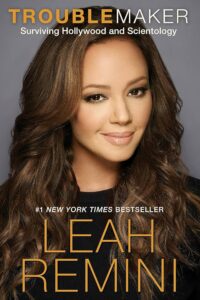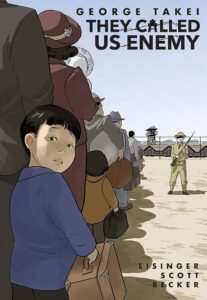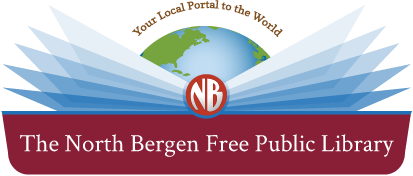November is National Memoir Writing Month and in this post we will be discsussing the various types of memoirs, a brief look at the history of early memoirs and recommendations. Be sure to come to the Main Library and check out our in house library display for Memoir Writing Month as well!
Derived from the French word mèmoire, memoir is written from the memory or personal experience of the author. As part of the nonfiction genre, memoirs and autobiographies tend to get mixed together. An autobiography, is a linear telling of an author’s experiences through first person narration and is generally based in facts or order of events. Memoirs, on the other hand are reflections based around specific life events that are thematically linked. A biography is neither of these since it is based in critical viewpoints of the subject supplemented by additional research.
When did this form of literary genre first appear? The earliest account of a memoir was from Julius Caesar with his Commentaries on the Gallic Wars (Commentarii de Bello Gallico). Caesar told his accounts of the battles as well as showing his strategic plans in writing. Beginning in the 17th Century, memoirs shifted its focus from events of the time to individual people. Louis de Rouvroy, duc de Saint-Simon was French memorist who wrote about Louis XIV. The first woman to write a memoir is Margaret of Valois. Valois wrote her memoirs while in prison focusing on the memoir on her relationship with her brothers.
Author William Zinsser wrote “Everyone has a story to tell and everyone is telling it”. Memoirs have been popular in passing down familiar knowledge to younger generations and many feel that it is their legacy to pass down stories. Storytelling through oral histories has been engrained into the human psyche and memoirists believe that everyone should tell their own stories. Many believe that through memoir writing we can find a voice through the power of memory.
In the 1990s, a splurge of memoirs came into popularity. Some of the these memoirs were written by “regular people” about specific moments. In 1995, The Liar’s Club by Mary Karr tells moments from childhood in Texas including absent parents and sexual assualt helped reintroduce memoir to a modern audience. A year later in 1996 Frank McCourt’s memoir Angela’s Ashes was published. McCourt’s fammed memoir was a reflection of his childhood growing up in severe poverty in Ireland. Both of these books ushered in a new wave of Memoirs which not only grew the genre into popularity but also created several sub genres.
To date, there are about seven sub genres within the Memoir family. The first is one of the most common, the lifestyle or framework. In this sub genre, you can find memoirs about politicians, activists and professional memoirs. These types of topics would follow specific time frames such as Presidential memoirs. In this group, an author has the mobility to jump around various stories that lead to the over arching themes.
Recommendations
Year of the Tiger by Alice Wong
A Promise Land by Barrack Obama
Decision Points by George W. Bush
Across That Bridge by John Lewis
Haben: The Deafblind Woman Who Conquered Harvard Law by Haben Grima
When We Rise by Cleeve John
A Visible Man by Edward Enninful
2. War Memoir
The second sub genre are War Memoirs. War memoirs are written with the focus of the experience of combat and the aftermath of being in war.
Recommendations
Memoirs of an Infantry Officer by Siegfried Sassoon
Long Way Gone by Ishmael Bean
First They Killed My Father by Loung Ung
If I die in a combat zone, box me up ship me home by Tim O’Brien
Quartered Safe Out Here: A Harrowing Tale of World War II by George MacDonald Fraser
3. Spiritual Memoirs
In this sub genre, you will find authors that write about their faith, how are we connected to the world, questions and inspirations.
Recommendations
Unorthodox: The Scandalous Rejection of My Hasidic Roots by Deborah Feldman
Trouble Maker by Leah Remini
Year of Living Biblically by A.J. Jacobs
Bad Mormon by Heather Gay
Surprised by Joy by C.S. Lewis

4. Childhood
The fourth sub genre centers around childhood. This can also include coming of age memoirs in addition to childhood trauma. It can also reflect a definitive moment is a person’s life. The childhood sub genre is popular among many of the celebrity memoirs.
Recomendations
I know why the Caged Bird Sings by Maya Anglou
Prozac Nation by Elizabeth Wurtzel
Running with Scissors by Augusten Burroughs
The Glass Castle by Jeanette Walls
Token Black Girl by Danielle Prescod

5. Travel and Adventure
In this genre you will go either on a trip with the author or the author will reflect on their own adventure. This is supposed to make the author write with more intension for self reflection in either a critical or passing tone.
Recommendations
Walden by Henry David Thoreau
Eat, Pray Love by Elizabeth Gilbert
Greatest Beer Run Ever by John ‘Chick’ Donohue
Wild by Cheryl Strayed
A Walk in the Woods by Bill Bryson
6. Memoir Essays
Memoir essays as well as personal essays can be used as stand alone stories within a collection or connected by a theme. Memoir essays are short and usually fall between 2,000 to 10,000 words. It focuses is attention on one life experience that the author carries with them for long time. The narrow scope allows the author to examine the complexities of looking back in time at an event.
Recommendations
Born a Crime by Trevor Noah
We’re Going to Need More Wine by
Me Talk Pretty One Day by David Sedaris
The Things They Carried by Tim O’Brien
Slouching Towards Bethlehem by Joan Didion

7. Graphic Memoir
This sub genre is relatively new to memoir writing. Graphic memoirs are told through a series of comic drawings in sequential flow that can go more deeply into the story of the author. It is also called nonfiction graphic novels and are often entry points into graphic novels.
Recommendations
Fun Home by Alison Bechdal
The Complete Persepolis by Marjane Satrapi
Grass by Keum Suk Gendry-Kim
They Called Us Enemy by George Takei
March book 1 by John Lewis


Recent Comments